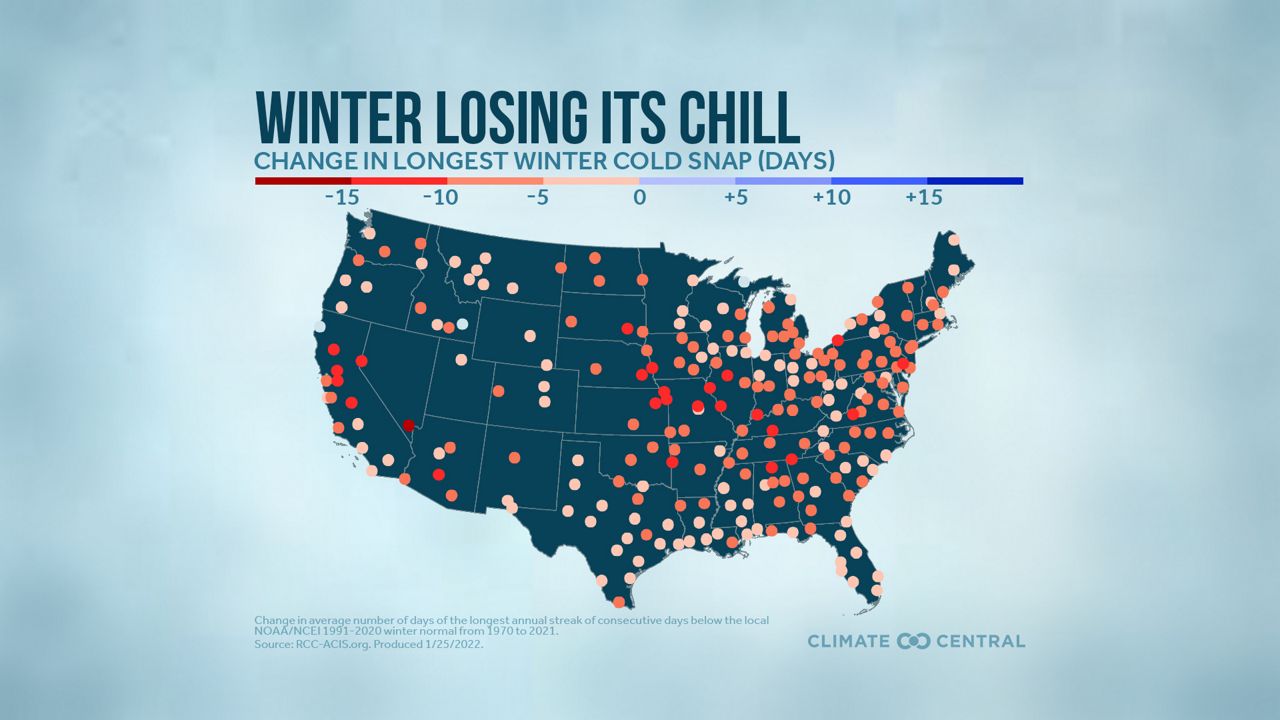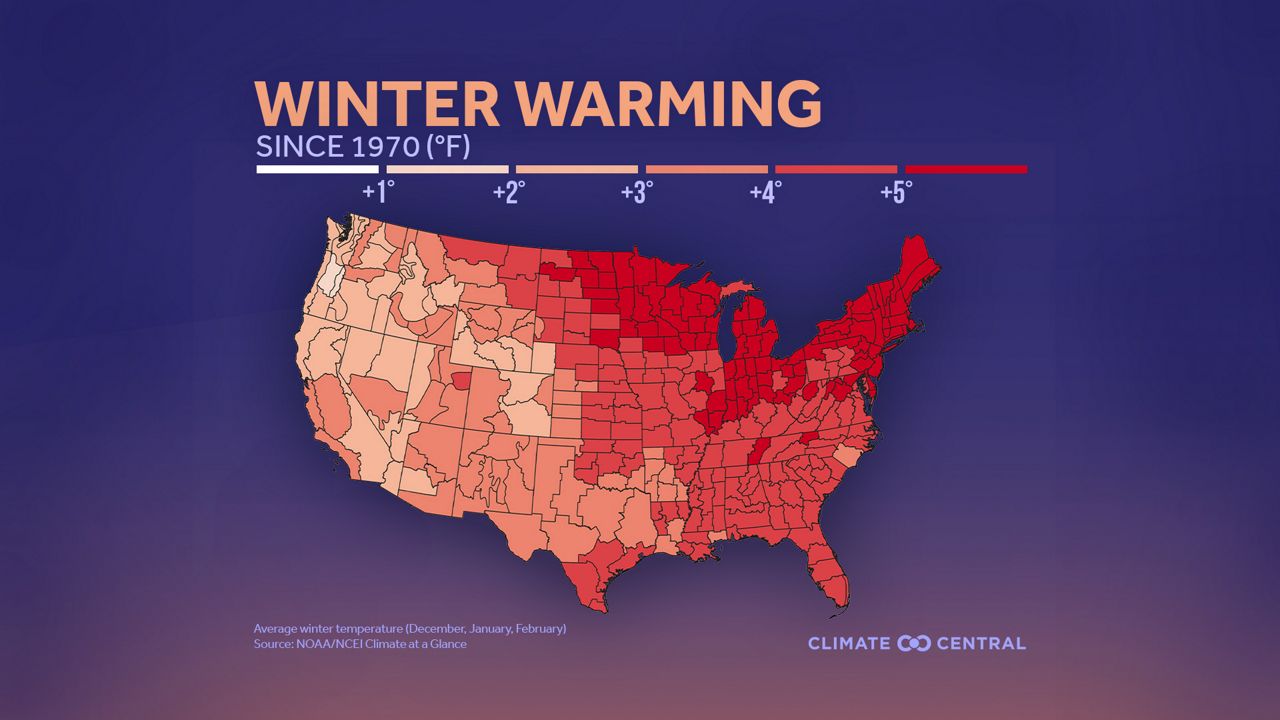Winter still brings plenty of bone-chilling days, but its cold snaps aren’t as lengthy as they used to be.
In a report from January 2022, Climate Central noted cold spells have gotten shorter among nearly all 244 locations they reviewed.
The researchers considered a “cold snap” to be the longest streak of days that were below the 1991-2020 average winter temperature for a particular city.
Of course, the number of consecutive colder-than-normal days changes a lot from one year to the next. But the trend for the longest cold snap in any year is toward fewer days.
Since 1970, the average among all the stations decreased by six days.
Las Vegas had the biggest drop: a whopping three-week change. A third of the stations saw their longest annual cold streak shrink by at least a week.

A few spots bucked the trend, though. Out of the 244 locations, six stayed the same and three saw an increase of two to three days.
Climate Central found that winter is the fastest-warming season in the United States. Perhaps it’s no surprise that the cold stretches don’t last as long as they did 50 years ago.
Out of 241 locations, 202 have an average winter temperature that’s at least two degrees warmer now than in 1970. Three-quarters of them also have an additional week of temperatures above the winter average.

Shorter winters, or ones that are less cold, have many effects.
Fall lasts longer and spring begins earlier, leading to longer allergy seasons and greater issues with ticks and mosquitoes.
Winter recreation faces challenges, too. Warmer temperatures affect the quality and amount of snow in skiing areas, and ski operators may have to create snow more often.
Perhaps counterintuitively, warmer winters could make blockbuster snowstorms on the East Coast more common.
Warmer ocean surface temperatures provide more moisture for nor'easters, which can mean bigger snowfall totals. These snowstorms can become very costly.



